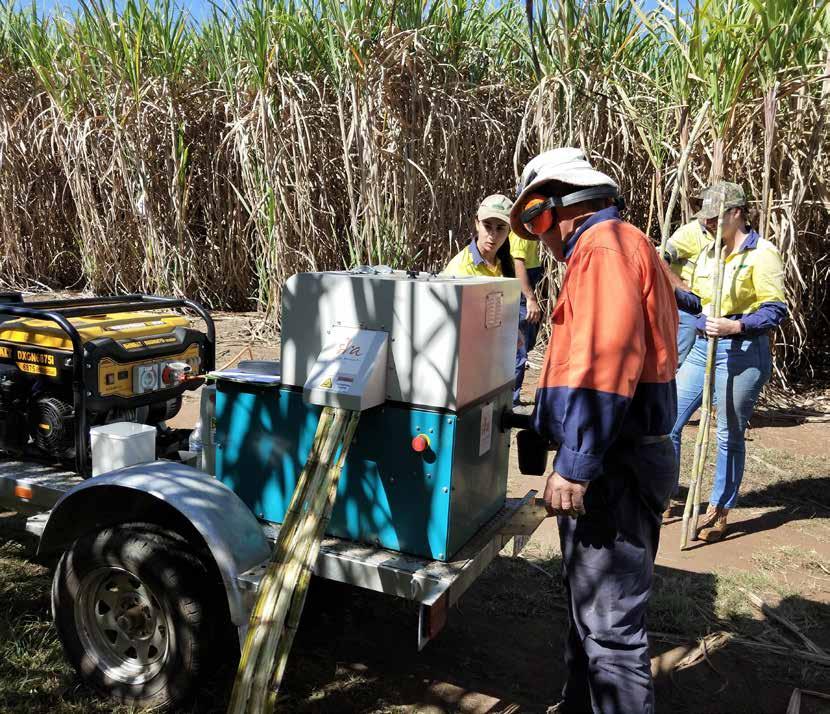
3 minute read
SUGARCANE MATURITY MANAGEMENT TRIALS SEEK REPEATABLE CCS BOOST
SUGARCANE MATURITY MANAGEMENT TRIALS
SEEK REPEATABLE CCS BOOST
Advertisement
Trials in Far North Queensland are examining the optimal time to apply a growth regulator to improve crop maturity.
More than 10 sites in the Mulgrave, Babinda and the Tableland are being sampled fortnightly to measure stalk moisture, ahead of application of a growth regulator in mid-May, and a mid-July harvest.
Near Infrared Service Leader Steve Staunton said the timing of application of a growth regulator is critical, with SRA’s experimentation involving application of MODDUS® . “MODDUS® is a crop growth regulator. So, what it does, is it stops the crop growing. This then allows the crop to put its energy into sugar production rather than vegetative growth,” Steve said.
“The research that we’ve been doing is seeking to give a repeatable outcome, which would give confidence to growers using MODDUS® or other growth regulators.”
“What we're finding is that there are times when a growth regulator is needed to improve crop maturity. But you do need to know whether the crop is actively growing or not,” Steve said.
“SRA is spending a lot of time and effort in developing in-field analyses so we can determine what the best crop maturity status is for application. If you apply it too early, there’s a potential for a large loss of yield because you’ve stopped the crop from growing. If you apply it too late, there’s potential you’ll get no benefit - so no return on your investment,” Steve said.
Steve said observations to date show significant opportunity to improve crop maturity status.
“Our research over a number of years has shown that at around 70 per cent crop moisture is the point where the stalk growth slows significantly, with about 90 per cent of the potential crop yield already present.
With our infield analyser, we get our measurement of the stalk moisture, and if it’s greater than 70 per cent there’s potential for MODDUS® application. If it’s less, we probably need to look elsewhere.”
Steve Staunton
Near Infrared Service Leader
“When we look over a season at most sites, we're seeing that there is large potential opportunity for improvements, which is why we're working with industry currently to try and capture some of this potential"
Steve Staunton
District Manager Far North Gavin Rodman said trials were also investigating opportunities for a desiccant or crop finisher to support increased commercial cane sugar (CCS) prior to harvest, where moisture content is less than 70 per cent. Further work will be needed beyond the current trials to validate any initial findings.
Two demonstration sites in the Central district will also be treated with MODDUS to assess the economic benefit of the product. These treatments are being applied in late April to provide sufficient time prior to harvest to improve CCS. The same moisture requirements will be observed in this work as are being used in the Far North.
While it’s early days and more research is needed, Steve Staunton suggested the research had potential to influence the timing for the start of the harvest in some districts.
“We could potentially start earlier if we have control over crop maturity,” Steve said.
(Below) A cane maturity testing trailer in the field. The rig is a trailer-mounted small mill, powered by a generator.
A dashboard report of the full survey findings is available on the SRA website. The dashboard is dynamic and includes a range of data visualisations related to farm financial performance and management practices that can be filtered by district and profitability groups for benchmarking analysis.










